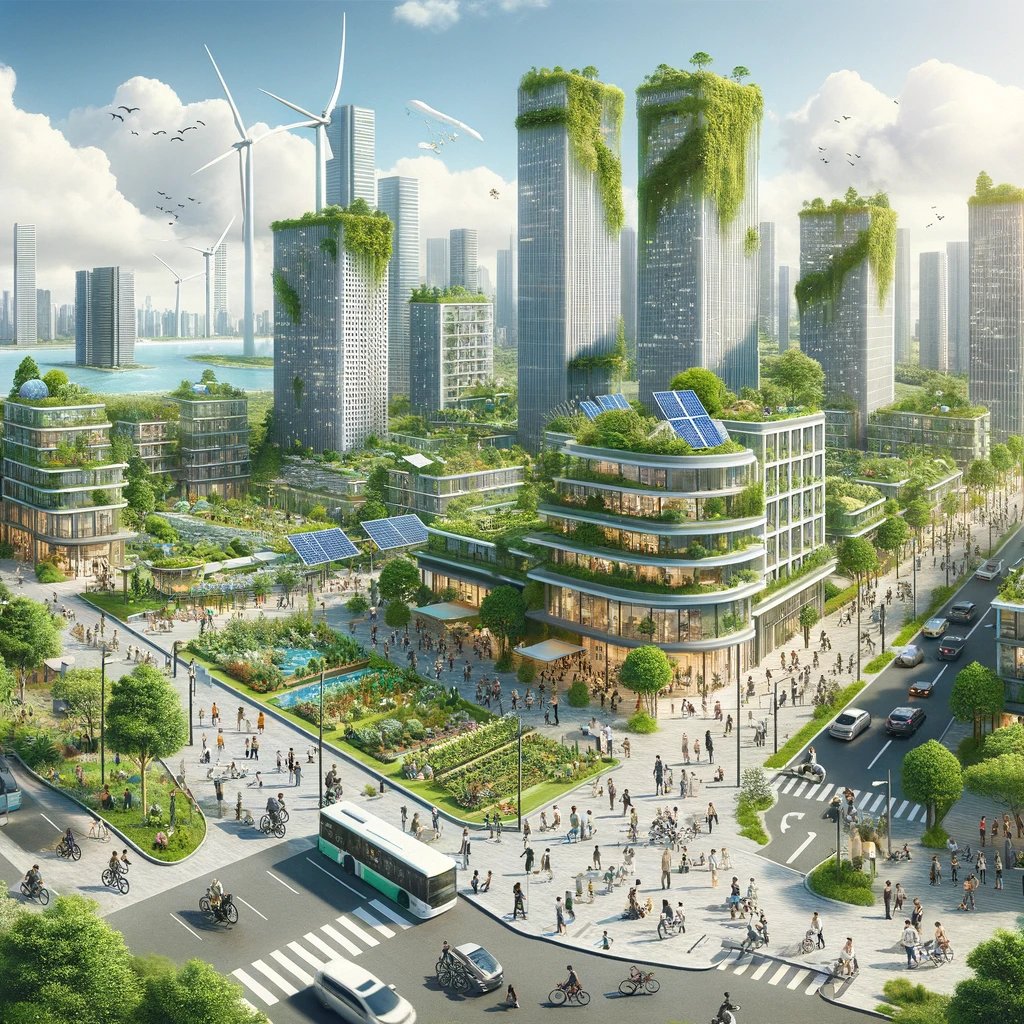How Can Human-Environment Interaction Foster Economic Progress and Environmental Sustainability Together?
SUSTAINABILITY OF THE PLANET
2/26/20243 min read


When we talk about human activity for growth, we often end up with the argument that no matter what we achieve in accelerating our life quality, we are bound to lose our environmental serenity. In other words human growth indices are considered inversely proportional to environmental sustainability.
But, can we think of; if the decline of poverty due to growth activity can be a catalyst for nurturing a deeper connection between mankind and its environment?
Of course, economic development and environmental preservation can be harmoniously intertwined. We are here discussing how alleviating poverty can foster environmental stewardship. In this paper we are advocating for a paradigm shift that recognizes economic empowerment as a prerequisite for sustainable living.
How awareness about environment leads to the economic empowerment
It is a truth that in pursuit of progress, we have failed our ecology. In the era of the 4th industrial revolution, we are compelled to ponder over how we can reduce global temperature to the set target of the Paris COP agenda. So, if economic growth is frequently pitted against the goals of ecological preservation, it is not without basis.
Thus, as we stand at the crossroads of history, facing unprecedented environmental challenges, it becomes necessary that we redefine our understanding of economic growth and reduce poverty levels to the environment.
This narrative that emerges is not one of conflict, but of coexistence, where the upliftment from poverty introduces a new era of environmental consciousness and action.
How consumer power to choose leads the green revolution
The improved understanding of growth and environment is the notion of empowerment through choice. When individuals leap from the clutches of poverty, their choices expand and options enhance, not just in the marketplace, but in the directions that guide their consumption. Economic stability brings with it the suitability for consumers to choose products and services that align with sustainable practices. This is not just speculation or a wish list but is supported by emerging data trends that point towards a green consumer revolution.
Consider, for example, the growing demand for sustainable energy solutions. Recent upgrades in technology, with the aid of policy incentives, have made renewable energy increasingly accessible, which leads to a surge in consumer adoption. This trend suggests a positive shift towards green consumption. This change is led by an empowered class of consumers leveraging their economic might to champion environmental sustainability.


PICTURE CREDIT: CANVA
PICTURE CREDIT: AI
How sustainability co-opts innovation
Consumer revolution for sustainability paves the way for innovation across industries. Companies striving for solutions for the evolving preferences of their customers are supporting green technologies, sustainable supply chains and eco-friendly product range. This relationship of consumer demand with industry innovation creates a virtuous cycle of sustainability. In it economic prosperity and environmental preservation are mutually respected.
In addition to that, the decline of poverty is instrumental in democratizing access to sustainable solutions. As more and more people can afford green products and technologies, the scale of their adoption increases. It reduces costs and makes them even more accessible. In this way, the democratization of sustainability has the potential to bridge the gap between haves and have nots. It ensures that the benefits of environmental stewardship are equitably distributed.
Change comes with education
Role of education has a significant role in this discourse. The reduction in poverty increases levels of education. Education gives awareness and an eye for environmental protection. Those who are educated are adaptable to understand the complexities of climate change. They can be change agents for biodiversity and they can play crucial role to guide human activities on the planet.
This is time for action
Since we craft a future where economic empowerment and environmental well being go together, it is required that we champion policies and actions that combine these two. Governments, corporations and civil society must unite to make an eco system for sustainable development, from incentivizing green technologies to investing in education.
Thus, the narrative comes forth is one of hope and possibility. The decline of poverty through economic activities is not a threat to our planet but can be a powerful tool for environmental protection. By adopting this notion, we can devise a path to walk on a sustainable future, where economic prosperity and ecological harmony coexist.
This is not a theoretical rhetoric, but time for action has come. It is a reminder that in the search of sustainability, every one of us empowered by economic activties are custodians of our planet.
Who We Are:
The Economic Nations champions global unity through economic collaboration, focusing on sustainable growth, reducing inequalities, and enhancing global relationships for mutual prosperity and peace.
Contacts
enquiry@economicnations.org
(xx) 98-11-937-xxx (On verification)
